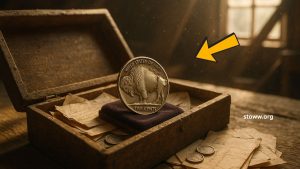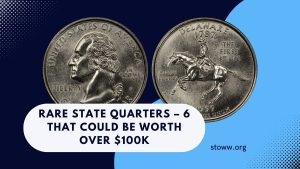The world of coin collecting is filled with tales of rare finds and unexpected treasures. Among these, the 1944 steel wheat penny stands out as a coin of immense value and intrigue.
While rumors have circulated about these pennies being worth astronomical sums, such as $1.2 billion, it’s essential to separate fact from fiction and understand the true value and rarity of this coin.
The Origins of the 1944 Steel Wheat Penny
During World War II, copper was a critical resource for wartime necessities. To conserve copper, the U.S. Mint produced pennies in 1943 using zinc-coated steel instead of the traditional copper alloy. These 1943 steel pennies are relatively common and can still be found in circulation.
In 1944, the Mint reverted to using copper for penny production. However, due to a few leftover steel planchets from the previous year, some 1944 pennies were mistakenly struck in steel. These error coins are incredibly rare and have become highly sought after by collectors.
Identifying a 1944 Steel Wheat Penny
To determine if you possess one of these rare coins, consider the following characteristics:
- Material: The 1944 steel penny is made from zinc-coated steel, giving it a silver-gray appearance, unlike the typical copper pennies of that year.
- Magnetic Properties: Due to its steel composition, the 1944 steel penny is magnetic. A simple test with a magnet can help identify its authenticity.
- Weight: The steel penny weighs approximately 2.70 grams, whereas the standard copper penny weighs about 3.11 grams.
| Feature | 1944 Steel Penny | 1944 Copper Penny |
|---|---|---|
| Composition | Zinc-coated steel | Copper alloy |
| Color | Silver-gray | Reddish-brown |
| Magnetic | Yes | No |
| Weight | 2.70 grams | 3.11 grams |
The True Value of a 1944 Steel Wheat Penny
While the notion of a 1944 steel penny being worth $1.2 billion is an exaggeration, these coins are undeniably valuable. Their worth depends on factors such as condition, mint mark, and provenance.
- Condition: Coins in mint state (uncirculated) condition fetch higher prices. For instance, a PCGS MS66 graded 1944-S steel cent sold for $490,500 in January 2025.
- Mint Mark: The presence of a mint mark can influence value. For example, a 1944-D (Denver) steel penny in average condition is estimated at $36,447, with uncirculated examples reaching up to $64,930.
Other Notable Rare Pennies
While the 1944 steel penny is exceptionally rare, other pennies have also garnered significant attention:
- 1943 Bronze Wheat Penny: In 1943, pennies were primarily struck in steel. However, a few were mistakenly made from bronze. One such penny sold for $840,000, making it one of the most valuable pennies known.
- 1909-S VDB Penny: This penny, bearing the initials of its designer Victor David Brenner, had a limited mintage of 484,000 coins. Its rarity has led to auction prices exceeding $100,000.
The allure of the 1944 steel wheat penny lies in its rarity and the fascinating story behind its creation. While tales of it being worth $1.2 billion are unfounded, possessing one can still mean a substantial windfall.
If you suspect you have this rare coin, it’s advisable to seek expert authentication to determine its true value.
FAQs
How can I verify the authenticity of a 1944 steel penny?
Conduct a magnet test; if the penny is magnetic, it may be steel. For confirmation, consult a professional coin grading service.
Why were some 1944 pennies made of steel?
Leftover steel planchets from 1943 were inadvertently used in 1944, resulting in these rare steel pennies.
Are all 1944 pennies valuable?
No, standard 1944 copper pennies are common and hold nominal value. Only the rare steel variants are highly valuable.



